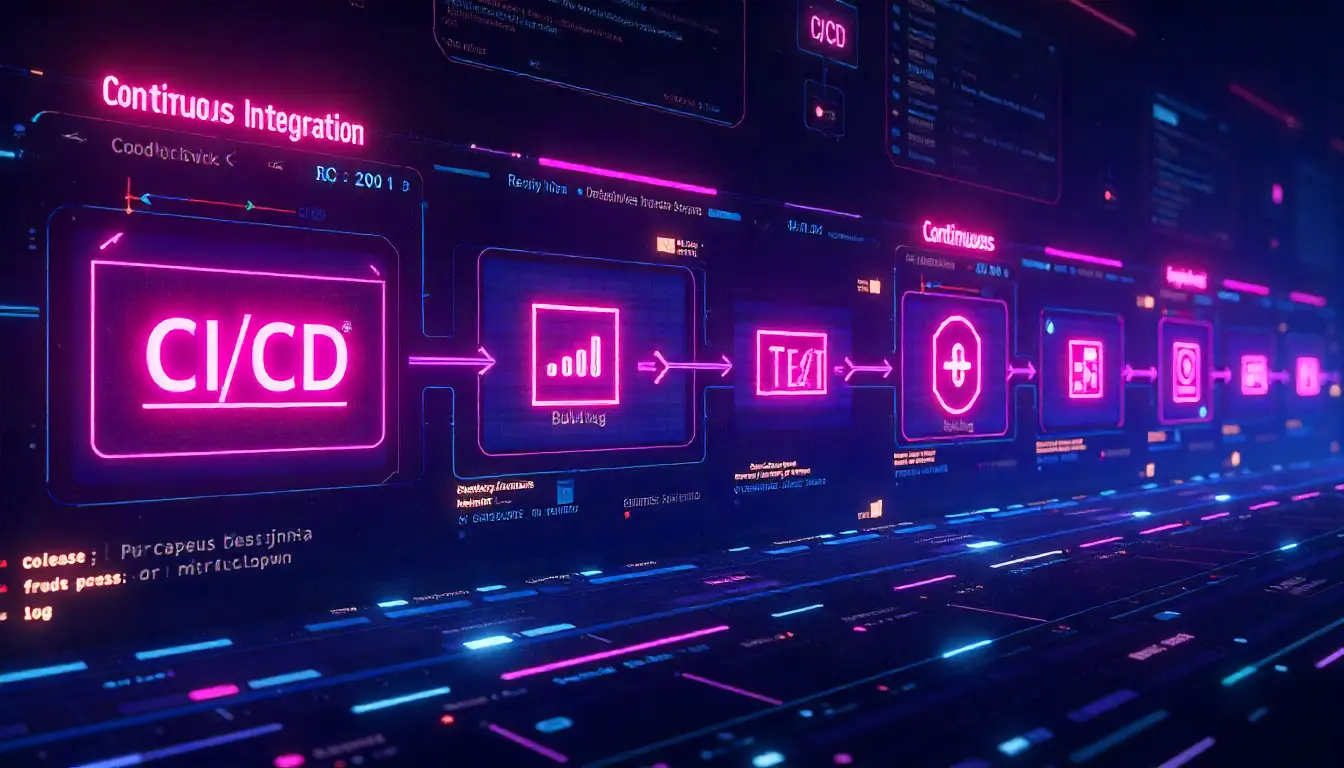CI/CD: The Complete Software Delivery Automation Revolution
Web and mobile development
Share
Table of contents:

CI/CD (Continuous Integration / Continuous Deployment) is a software development practice that automates the process of integrating code changes, running tests, and deploying updates to production environments. By combining Continuous Integration (CI) and Continuous Deployment (CD), CI/CD creates a unified pipeline where every commit can become a reliable production release with minimal manual intervention.
Think of CI/CD as a fully automated software factory — where code commits are the raw materials, and tested, production-ready applications are the finished products. This approach accelerates delivery, improves quality, and reduces operational risk by catching issues early and standardizing deployment workflows.
Unified CI/CD Architecture and Workflow Integration
A modern CI/CD pipeline connects development, testing, and operations into a single automated flow, eliminating handoffs and delays that traditionally slow software delivery.
Key pipeline components include:
- Source integration – automated triggering from Git, SVN, or other version control systems
- Build orchestration – compiling, packaging, and producing deployable artifacts
- Quality validation – running automated unit, integration, security, and performance tests
- Release automation – orchestrating deployments across staging, QA, and production environments
- Monitoring integration – collecting real-time metrics and logs to ensure deployment health
- Rollback mechanisms – instant reversion to previous versions in case of issues
This architecture ensures that every code change follows a consistent, automated path from development to production, reducing human error and improving deployment confidence.
Advanced Pipeline Strategies and Deployment Patterns
Organizations can extend CI/CD pipelines with advanced strategies that optimize reliability, traceability, and risk management:
These techniques help teams deploy more frequently without sacrificing stability, turning releases into routine events rather than stressful milestones.
Transformative Business Impact and Industry Adoption
CI/CD adoption is nearly universal among high-performing software organizations. Technology leaders like Amazon, Netflix, and Google deploy code thousands of times per day across global infrastructure, setting the gold standard for speed and reliability.
Business outcomes include:
- Faster time-to-market: 70–90% reduction in release cycles
- Higher software quality: early detection of defects through automated testing
- Lower operational risk: standardized, repeatable deployments reduce human error
- Increased innovation capacity: developers focus on features, not manual release tasks
Startups use CI/CD to iterate rapidly and outpace competitors, while enterprises leverage it to accelerate digital transformation and respond quickly to customer needs and regulatory changes.
Implementation Excellence and Organizational Transformation
Successful CI/CD adoption is as much a cultural shift as it is a technical one. Teams must embrace:
- Shared responsibility – development and operations jointly own pipeline health
- Test automation investment – comprehensive coverage for functional and non-functional requirements
- Infrastructure as Code (IaC) – reproducible, version-controlled environments
- Observability practices – real-time monitoring, logging, and alerting to maintain confidence in frequent releases
Organizations that invest in these practices often see rapid ROI through reduced deployment failures, faster recovery times, and measurable improvements in customer satisfaction.
Summary
CI/CD is not just a toolchain — it’s a software delivery philosophy that transforms how organizations build, test, and ship software. By unifying integration and deployment processes into a seamless, automated pipeline, CI/CD enables faster delivery, higher quality, and greater business agility.
When combined with DevOps principles, CI/CD becomes the backbone of modern software development, empowering teams to innovate continuously while maintaining stability and reliability.











